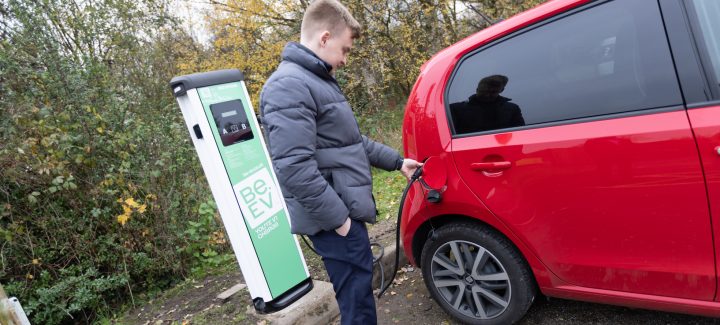With winter gripping us, new EV users may be surprised to see their range running down and need to boost more frequently, but there are some polite rules of the recharge road to follow in the season of goodwill.
Millions of Brits will benefit from easier public EV charging following the passing of new laws earlier this month. With the laws expected to provide clearer pricing, easier payments and improve charging reliability, the experts at DriveElectric have provided a full list of do’s and don’ts when using public EV chargers.
Mike Potter, CEO at DriveElectric, said, “With electric vehicles becoming the norm, lots of drivers new to electric cars are hitting the road and charging stations.
“There’s a few do’s and don’ts that everyone should keep in mind when using a public EV charger, this is why we’ve put together a list of everything you need to know.”
10 EV charging etiquette tips:
1. Always practise safe charging.
This begins with proper cable management. Once you’re all hooked up to the charging station and you’ve confirmed the vehicle is charging, it’s time to tidy up. Neatly wind the cord on its holder and tuck it in so people don’t trip on any excess length of cable – or drive over it.
2. Charge up and move on.
Only occupy a charging spot while your car is being charged. As soon as the charging session is completed, move your car as soon as possible and make way for a fellow plug-in driver. Your charging session should be considered ‘complete’ either when a) your battery is full, or b) when you have enough range to comfortably reach your destination.
3. Charge only when necessary.
Trying to use a rapid DC charger when your battery is above 80% results in longer wait times, as both the electric vehicles will only accept a lower rate of charge. A much better idea is to carry on with your journey when you’ve hit 80% and use another rapid charger for a quick top-up when closer to your destination. You’ll find that’s a quick way of completing your journey.
4. Keep an eye on your re-charging speed at public charging units.
Rapid and Ultra-rapid public chargers are designed to operate most efficiently when a vehicle’s state of charge is between 10%/20% and 80%. If you remain plugged in once your EV has hit 80% you’ll notice that the rate at which the charger is sending power to your vehicle reduces, and reduces quickly, sometimes to rates lower than using a 7kW home charger.
This is a design feature to prolong the life of vehicle batteries. Therefore when you hit 80% and/or you notice your rate of charge to dramatically reduce, that’s your cue to finish charging and allow another driver to use the charger.
5. Look after the charging kit.
For the benefit of you, other EV drivers and the charge point, you should always leave the chargers tidy. Once finished, replace the cable neatly in its holder. Don’t leave it on the ground, as it may get run over, grime will get onto the contact points and potentially cause irreversible damage. Charging points are expensive pieces of kit. Looking after them allows everyone to continue using them for longer and avoids costly repairs.
6. EV spots are for charging EVs.
Owning an EV doesn’t mean you can park in a charging bay without using the charger. It’s really important to keep charging spots clear for those who need it. The charging points are there to get people home to their family, not so individuals can have a shorter walk to the shop.
7. Don’t unplug plug-in hybrids.
Plug-in hybrids have as much right to use a charging station as an electric-only vehicle. An owner of an EV, does NOT have the right to unplug a plug-in hybrid just because that car has a back-up petrol engine.
8. The exception to Rule #7.
If you need to charge, it’s OK to unplug another car. But only if the first car has clearly finished charging. In this event, the driver who makes the switch should leave a note explaining why it was unplugged.
9. No Nasty Notes.
If you do need to leave a note – be polite. If the charging spot you counted on using is ICEd then leave a note on the windscreen explaining the predicament. The note can be firm, but should be expressed in polite language.
10. Charge At Off-Peak Times.
There has been a rapid increase in the number of EVs on the road, so at peak times public charging hubs can get busy. Charging outside of rush hour means you are far less likely to need to queue.
Mike also added, “Most electric vehicle drivers will need to use the public network, even if they do so infrequently, so adhering to these simple, friendly guidelines will prevent any unnecessary confrontations and ensure that driving an EV remains stress-free and enjoyable!”


